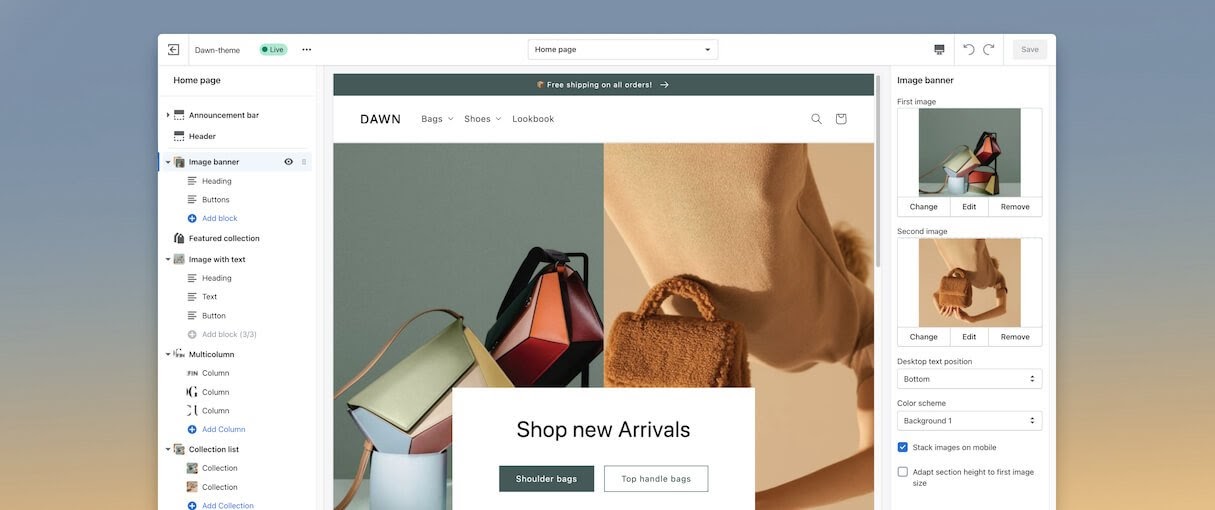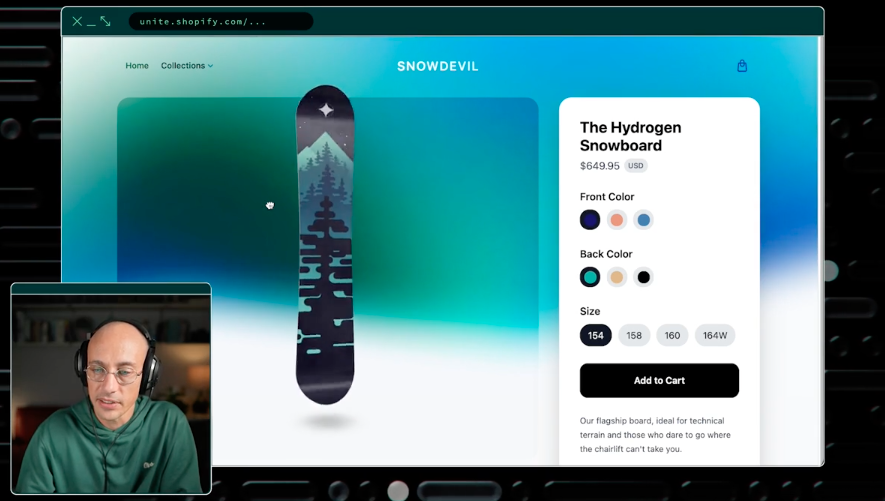Our Practice
Trajectory has a Shopify-focused team that is continuously testing new ways to streamline the customer experience from purchase to product delivery by fully integrating Shopify eCommerce with best-of-breed ERPs. As such, we were excited to learn about the latest updates from Shopify, which include:
- Zero percent revenue share annually on your first million dollars in the Shopify App Store
- Online Store 2.0 and metafields
- App Extensions to improve Shopify Checkouts
- Focus on app development
- React + JavaScript = Hydrogen
“As of August 1, 2021, Shopify is offering zero percent revenue share on the first million dollars you make annually on the Shopify app store.”
1. Zero percent revenue share annually on your first million dollars in the Shopify App Store
If you’re into coding on Shopify, they have created a one-time registration fee for all developers who sign up after August 1, which will be paid when they submit their first app to be reviewed. All the more reason to sign up and start building your app today!
More information here in the Shopify Help Center App revenue share update.

2. Online Store 2.0 and metafields
Also: Improvements to metafields …
The new theme editor will also allow Shopify Sellers to add properties and specifically metafields to pages without the use of APIs or code. Now you will be able to add exactly the content you need to the product page, like introducing a space for buyers to include a size chart or a features list. Anything that is unlikely to appear in the core store editor can now be added in via metafields. Learn more here about Shopify Online Store 2.0.
Shopify has revamped metafields in three key ways:
- More flexible: Metafields now have a much more flexible type system that will grow over time to become more tailored to commerce data.
- Standard metafields: Shopify is introducing standard metafields, which make it much simpler for custom themes to work out-of-the-box on stores across different market verticals.
- Presentation hints: You will now be able to add presentation hints to metafields, allowing Storefront API and Liquid users to render merchant data in the way the merchant intends, with far less custom code.
Other new upgrades include: Theme app extensions and app blocks for the storefront, flexible store content with theme dynamic sources, and new developer tools for building Shopify Themes.
3. App Extensions to improve Shopify Checkouts
- Extension APIs: A series of APIs that will allow users to build powerful checkout customizations into apps. Still under development, these APIs will allow you to access and modify checkout line items, discounts, customer information, metafields, buyer journey, and cart attributes. If you’re a Certified Shopify Partner like Trajectory, custom apps present a new way of deploying your solutions to multiple clients at a time.
- New extension points: New extension points allow you to build experiences for different parts of checkout.
- A component library: Your app will use this component library to create custom experiences and insert them at various extension points.
- New APIs: These APIs give you control over certain elements of checkout, such as the Branding API, which lets you change the colors, spacing, typography, and more of the checkout experience.
Soon we will also have access to new Post-purchase checkout extensions, so you can focus on building great post-purchase experiences for your users’ buyers, while Shopify delivers a fast, reliable, and world-class checkout.
And last but not least, Shopify Scripts are a feature available to Plus merchants, allowing them to build backend custom logic unique to their brands and a new payments platform is scheduled for release in late 2021.
4. Focus on app development
These app development capabilities enable Shopify customers to use Shopify’s eCommerce outstanding look and feel and overall customer shopping experience while running their business like a tight ship by integrating it with best-of-breed ERP systems to fully manage their inventory, manufacturing, purchasing, accounting and in general, the operation of their business. At Trajectory we make this a reality for many of our Shopify eCommerce and Oracle-NetSuite ERP clients.
Also, to help improve the process of developing app extensions, Shopify is introducing the Developer Console, where you can build and test extensions in a real store environment. Currently, App Bridge Admin extensions can’t be tested on real stores with real data without pushing the extension to Shopify’s CDN, which isn’t an ideal solution. The Developer Console provides a better, faster, and more realistic developer experience when building and testing App Bridge Admin extensions.
Soon it will also be easier to find apps. Enhancing app discoverability by improving the Shopify App Store.
Let’s wrap this up with Additional Payout methods. You will soon be able to receive payments in different forms, in addition to PayPal. This includes local bank transfers, wire transfers, and additional payment methods. Shopify plans to receive payouts in more than 200 regions and countries around the world.
5. React + JavaScript = Hydrogen
We know it. The design also sells. So Hydrogen is coming soon to add 3D and great immersive shopping experiences to Shopify Stores. Built on JavaScript and React, Hydrogen provides a quick-start toolkit and set of components, so you can focus on building the fun parts that make your store unique, not boilerplate. It’s still at an early stage, but please see this demo below if you want to have a peek into the future of eCommerce.
If you’re interested in learning more about how Trajectory helps businesses integrate Shopify with industry-leading ERPs, visit our Shopify product page here.

You can review the entire Shopify Unite 2021 Conference here 👇🏻



